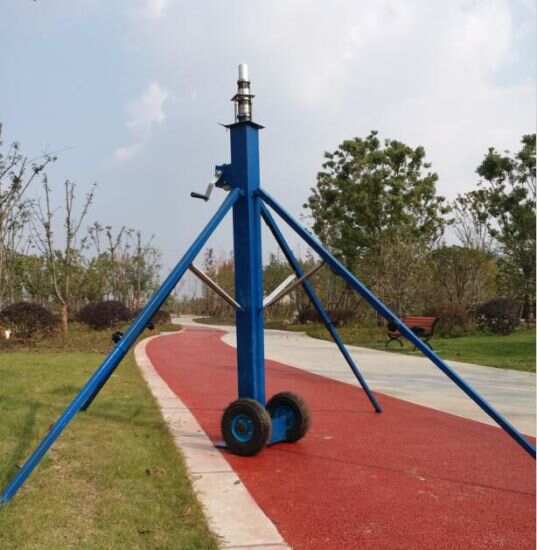What Is A Telescopic Mast?
May 10,2022
A telescoping or telescopic mast is an upright pole or tower that consists of tubular sections that slide within another in order to be extended or retracted. Telescopic masts can be made from a variety of materials including steel or aluminum depending upon the application, mission requirements and can be mounted to a vehicle’s hitch receiver, building or command center wall, freestanding tripod, on a mobile surveillance trailer, folded down on a roof and even through a hole in the roof via a roof bearing!

For example, The RATT is a portable tower that employs a pneumatic telescopic mast system made from high-strength aluminum in order to keep it lightweight, simple and rapidly deployable for law enforcement mobile surveillance, tactical long range surveillance, situational awareness, investigations, AI, LPR, video analytics (face, appearance & object search), firefighting to see smoke/hotspots with a thermal camera, monitoring large public events, crime scene surveillance/deterrent, radio/WiFi/mobile repeater antenna, long-range acoustic devices, construction site video security, edge network applications, UAV/drone detection, UAV/drone antennas, 3D laser scanners and more.
How high can I get a Telescopic Mast?
Lightweight telescopic masts typically range in size from 10-50 feet and some models even have “lockable collars” that keep the mast extended for longer deployments and also can reduce or restrict the extended height as needed for special applications such as AI, LPR, facial recognition or other end uses. Anything beyond 30 feet should be properly guyed or if wind speeds exceed 30 MPH.
How are pneumatic Telescopic Masts extended?
Pneumatic telescopic masts use air pressure to quickly extend and retract the mast. Hand pumps and electric pumps are typically used to control pneumatic telescopic masts. The RATT can be controlled via the standard hand pump or the optional electric pump both which will elevate and retract The RATT in under 2 minutes.
What can I put on top of a Telescopic Mast?
Telescopic masts are primarily used with cameras for mobile video surveillance, situational awareness & thermal imaging, radio devices including RF antennas, cellular signal boosters, outdoor WiFi access points, edge networks and many more.
Depending upon the height, material and diameter of the telescopic mast, weight limits for the top, payload or headload typically do not exceed 49 lbs for rapid deployment masts. However, there are heavier-duty masts available for special order that can manage payloads in excess of 200lbs.
Do I have to use guying or guy wire with a Telescopic Mast?
It is strongly recommended that you follow the manufacturer’s specifications and guidelines as mast loading, overall height and weather conditions greatly affect performance. Generally speaking, The RATT is safe to operate without guying under 30 MPH winds. Custom Finite Element Analysis (FEA) studies can be generated to predict how your specific RATT deployment reacts to real-world forces and other physical effects. This shows at what point The RATT will break or work as designed.
In the end
Whether you have any interest in pneumatic telescopic mast price,pneumatic telescopic mast china, contact us and the best price is waiting for you.
Want to learn more about how we can help? Feel free to get in touch with us today to see what we can do.